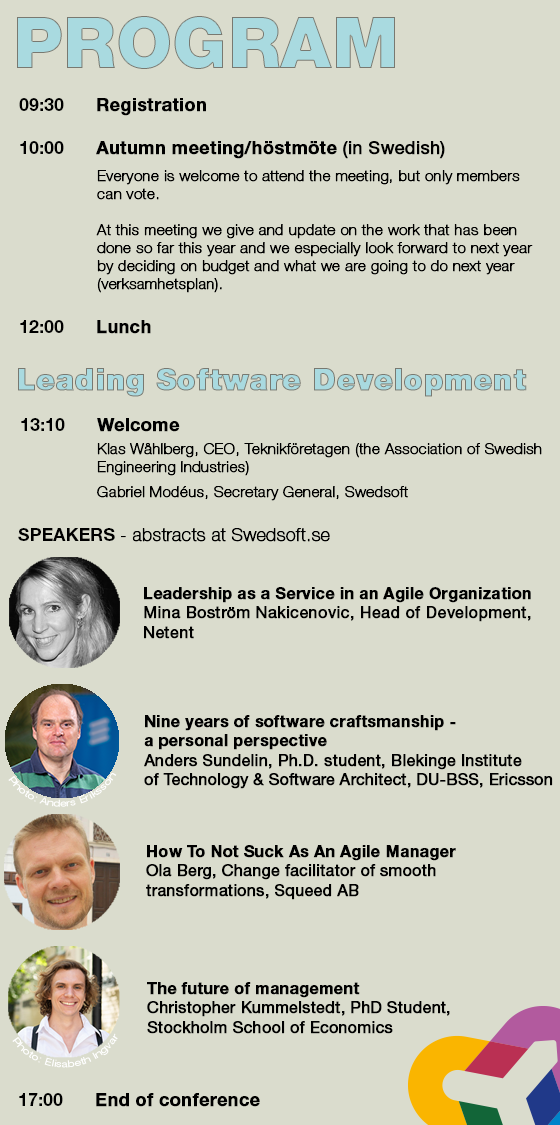Välkommen till årets höstmöte med efterföljande konferens Leading Software development.
Förmiddagen innehåller årets höstmöte där vi går igenom vad som hänt så här långt under året och tittar framåt genom att besluta om verksamhetsplan och budget för 2019.
Efter lunch fortsätter vi med konferensen Leading Software Development.
Praktisk information
När: 27 nov 2018
Var: Teknikföretagen, Storgatan 5, Stockholm
Kostnad: Kostnadsfritt.
Registrering: Här, senast 14 nov.
Programmet med abstracts finns längst ner på denna sida.


